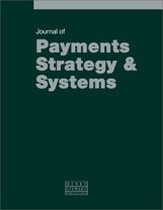SEPA for corporates: On the path towards cross-border harmonisation
Abstract
This paper reviews the evolution of the Single Euro Payments Area (SEPA) by identifying a number of areas in relation to efficient cross-border use of SEPA credit transfer and direct debits. Many international companies would like to make use of the harmonised SEPA proposition and centralise their payments and receivables flows. For those focusing primarily on the benefits of operating on a cross-border basis, which is one of the key opportunities envisaged for the SEPA, it is important to assess the degree and detail of emerging national approaches in terms of the implementation of the ISO 20022 XML standard, the types of national or regional Additional Optional Service and the different clearing practices associated with these. Other areas, such as mandate management in the case of direct debits and creditor identifiers or the prolonged coexistence of several domestic ‘niche schemes’, must be taken into account by companies that operate in a number of SEPA markets. Member states, EU regulators and supervisors, and the European Payments Council continue to focus on the harmonised implementation of SEPA. In this context, the SEPA Regulation, which mandated migration to the SEPA across the Eurozone by 1st August, 2014 is a key building block, which helped to ensure the momentum for migration. With the various timelines of the migration calendar brought in by the SEPA Regulation, the path for the long-term success of the SEPA harmonisation project has been laid out. Benefits of efficiencies and cost reductions for all users, including corporates, as well as increased competition are all expected to be realised over time.
The full article is available to subscribers to the journal.
Author's Biography
Ruth Wandhöfer is a regulatory expert in the field of banking and one of the foremost authorities on transaction banking regulatory matters. She is Global Head of Regulatory and Market Strategy for Citi’s Treasury and Trade Solutions business. In this role, Ruth’s key responsibilities include driving regulatory and industry dialogue and developing product and market strategy in line with the evolving regulatory landscape. Ruth was named one of 2010’s ‘Rising Stars’ by Financial News, named in Management Today’s 2011 ‘35 Women under 35’ list of women to watch (Sunday Times), and named by Treasury Risk Magazine as one of the 100 Most Influential People in Finance 2012. Following her first book ‘EU Payments Integration: The tale of SEPA, PSD and other milestones along the road’ in 2010, her second book ‘Transaction Banking and the impact of regulatory change: Basel III other challenges for the global economy’ was published in 2014.
